The modern workplace faces unprecedented challenges: remote work isolation, generational gaps, departmental silos, and mounting stress levels. Office party games address these issues by creating shared experiences that break down barriers and build genuine connections. Research consistently shows that employees who have strong workplace friendships are seven times more likely to be engaged at work, take fewer sick days, and stay with their companies longer.
But here’s what the studies don’t tell you—those friendships rarely bloom naturally between quarterly reports and budget meetings. They need a catalyst, something that lets people drop their professional masks for a hot minute and remember they’re dealing with fellow humans who also struggle with parallel parking and have strong opinions about pineapple on pizza.
Without further delay, let’s get deep into the ultimate office party games (15 experiences for all diverse teams!)
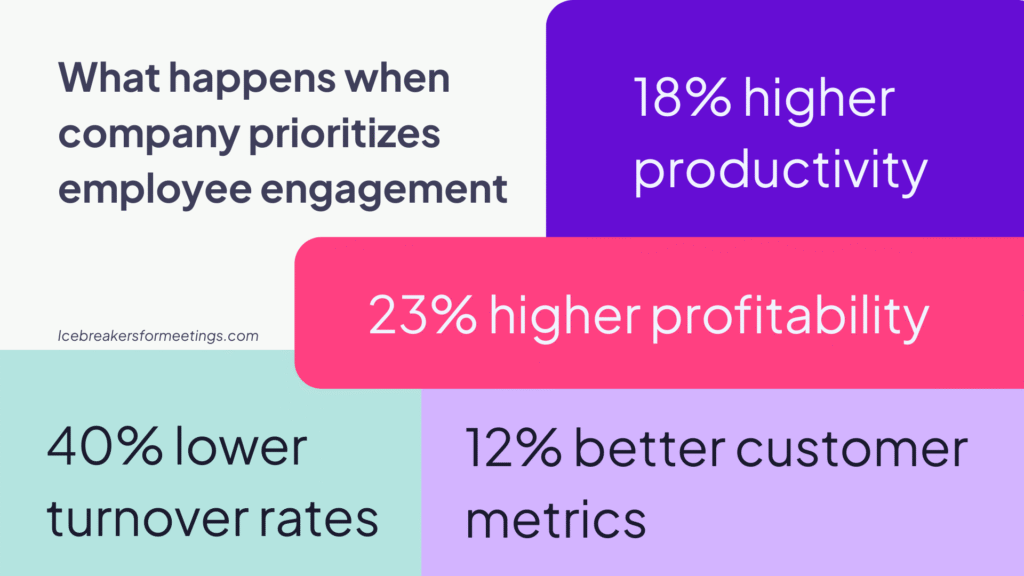
Office Party Games – Categorized by Purpose and Outcome
Icebreakers and First Impressions (5+ Games)
The first few minutes of any workplace gathering set the tone for everything that follows. Effective icebreakers transform awkward silence into energized engagement, helping people transition from work mode to social mode while creating an inclusive atmosphere where everyone feels welcome to participate. The key to successful icebreaking lies in choosing activities that match your group’s energy level, comfort with each other, and the time available.
1. Word Association Lightning Round
Purpose: Mental warm-up and creative thinking activation
Group Size: 5-30 people
Time: 5-7 minutes
Materials: None
Start with a work-related word like “teamwork” or “innovation.” Each person says the first word that comes to mind, building a rapid chain of associations. After 2-3 minutes, switch to personal topics like “weekend” or “adventure.” The goal is speed, not deep thinking, which helps people relax and stop overthinking their responses.
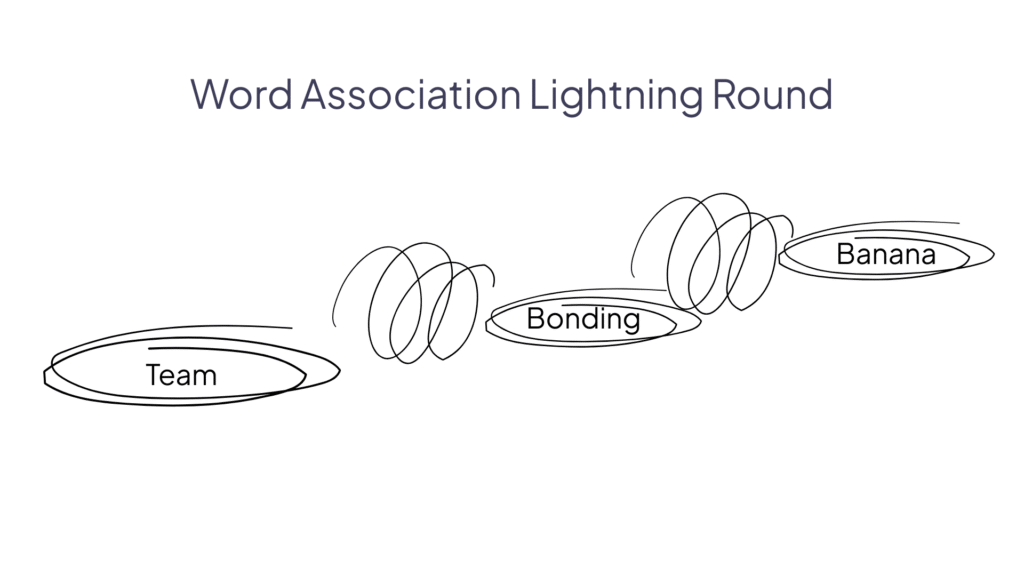
Facilitation Tips: Keep the pace brisk, celebrate unusual connections, and don’t let anyone overthink their choices. If someone gets stuck, encourage them to say any word and keep moving.
2. Two-Minute Mix and Mingle
Purpose: Physical movement and brief personal connections
Group Size: 8-50 people
Time: 6-8 minutes
Materials: Timer, upbeat background music
Participants have exactly 2 minutes to meet as many new people as possible, learning one interesting fact about each person. Ring a bell or pause music every 30 seconds to encourage movement to new conversations. End by having a few people share the most surprising thing they learned.
Variation: Theme the conversations around specific topics like “hidden talents,” “dream vacation spots,” or “proudest work moments.”
3. Emoji Check-In
Purpose: Emotional awareness and current state sharing
Group Size: 5-25 people
Time: 5-8 minutes
Materials: Emoji cards or smartphone emojis
Each person selects an emoji that represents how they’re feeling right now and shares it with the group along with a one-sentence explanation. This helps everyone understand the emotional landscape of the room and creates space for different energy levels.
Digital Version: Use emoji reactions in video calls or shared screens for remote teams.
4. Quick Draw Introductions
Purpose: Visual communication and creative expression
Group Size: 6-20 people
Time:8-10 minutes
Materials: Paper, markers or pens
Give everyone 2 minutes to draw a simple picture that represents something about themselves (hobby, goal, favorite food, etc.). No artistic skills required—stick figures and basic shapes work perfectly. Then spend 30 seconds per person having them show their drawing while others guess what it represents.
Accessibility Note: Offer verbal description alternatives for those who prefer not to draw.
5. Human Bingo Speed Round
Purpose: Discovery of commonalities and unique traits
Group Size: 10-40 people
Time: 7-10 minutes
Materials: Pre-made bingo cards, pens
Create bingo cards with squares like “Has a pet,” “Born in another state,” “Speaks two languages,” “Has run a 5K,” “Plays a musical instrument.” Participants race to find people who match each description and get their initials. First to complete a line wins, but encourage everyone to keep playing until time is called.
Customization: Include workplace-specific items like “Has worked here over 3 years” or “Works in IT department.”
Trust and Team Building Games (5+ Games)
Trust and team building activities form the foundation of high-performing workplace relationships. These games move beyond surface-level interaction to develop genuine interdependence, mutual support, and collaborative problem-solving skills that directly transfer to workplace effectiveness.
6. The Marshmallow Challenge Evolution
Purpose: Iterative design thinking and rapid prototyping collaboration
Group Size: 12-40 people (teams of 4-5)
Time: 45-60 minutes
Materials: Spaghetti sticks (20 per team), masking tape (1 yard), string (1 yard), marshmallows (1 per team), measuring tape
Teams build the tallest freestanding structure that supports a marshmallow on top. After the first 18-minute round, introduce a “client feedback” phase where teams must incorporate new requirements: structure must be earthquake-resistant (tested with table shaking), aesthetically pleasing (judged by other teams), or cost-effective (assign monetary values to materials).
Advanced Debrief: Discuss how teams adapted to changing requirements, managed resource constraints, and maintained collaboration under time pressure. Connect to workplace scenarios where projects evolve and require flexible thinking.
7. Bridge Building Under Constraints
Purpose: Engineering collaboration with communication barriers
Group Size: 8-20 people (pairs)
Time: 25-35 minutes
Materials: Building materials (varies by design), barrier screens
Pairs work on opposite sides of a visual barrier to build matching bridge halves that must connect in the middle. One person has the blueprint, the other has the materials. They must communicate effectively without seeing each other’s work until the final connection attempt.
Constraint Variations: Limited vocabulary (only 50 words allowed), time pressure (5-minute rounds), or material scarcity (each person has different supplies).
8. Back-to-Back Drawing Plus
Purpose: Instruction giving and active listening refinement
Group Size: 6-20 people (pairs)
Time: 30-40 minutes
Materials: Simple drawings, blank paper, colored pencils
One person describes a drawing while their partner attempts to recreate it without seeing the original. Progress through rounds of increasing complexity: geometric shapes, simple scenes, abstract concepts, and finally emotional representations. Add constraints like no questions allowed, then questions encouraged.
Professional Extension: Use workplace-relevant diagrams like organizational charts, process flows, or project timelines to practice business communication skills.
9. Blind Maze Navigation
Purpose: Trust development and clear communication under constraints
Group Size: 6-16 people (pairs)
Time: 20-30 minutes
Materials: Large floor maze (tape), blindfolds, obstacles
One partner navigates a complex floor maze while blindfolded, guided only by their sighted partner’s verbal instructions. The maze includes obstacles, dead ends, and specific checkpoints that must be reached in order. Switch roles halfway through.
Safety Protocol: Always have spotters for physical safety, ensure clear pathways, and make participation completely voluntary.
Communication Focus: Debrief on instruction clarity, trust development, and how spatial communication differs from other workplace communication.
10. Escape the Island
Purpose: Resource allocation and consensus building under pressure
Group Size: 8-25 people (teams of 4-6)
Time: 35-45 minutes
Materials: Scenario cards, resource lists, timer
Teams are “stranded on a desert island” and must collaboratively decide how to survive and escape. Provide lists of available resources (limited food, tools, materials) and require unanimous decisions on survival priorities, escape strategies, and resource allocation. Introduce periodic “crisis cards” that force teams to adapt their plans.
Crisis Examples: “Storm approaching – shelter priority increases,” “Team member injured – medical needs,” “Rescue boat spotted – signaling becomes critical.”
Learning Focus: How teams handle disagreement, make decisions under pressure, and prioritize competing needs.
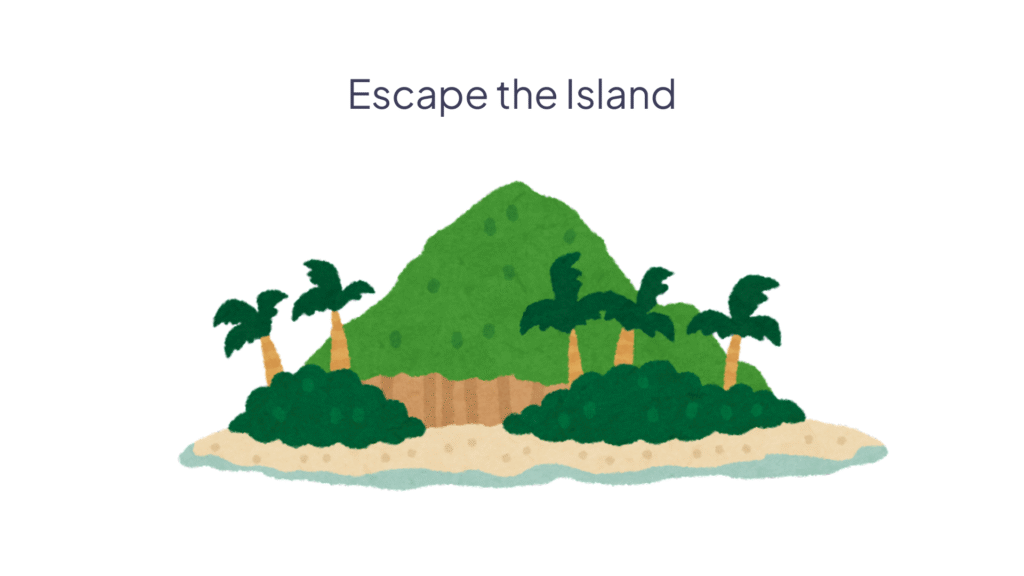
Competition and Challenge Games
Competition, when properly structured, taps into fundamental human motivations for achievement, recognition, and excellence while building team spirit and individual confidence. These games channel competitive energy toward positive outcomes: skill development, creative problem-solving, and collaborative achievement.
11. Speedy Skills Showcase
Purpose: Rapid skill demonstration and hidden talent discovery
Group Size: 8-30 people
Time:45-60 minutes
Materials: Varies by skill category, timers, scorecards
Create multiple skill stations where individuals compete in 3-5 minute challenges: typing speed tests, mental math competitions, paper airplane distance contests, memory games, creative writing sprints, puzzle-solving races, or artistic challenges. Participants rotate through stations, competing against personal bests and others.
Skill Categories:
- Cognitive: Logic puzzles, word games, calculation challenges, pattern recognition
- Creative: Quick sketching, story writing, design challenges, improvisation
- Physical: Precision tasks, coordination challenges, endurance activities
- Technical: Software shortcuts, troubleshooting scenarios, efficiency tests
Scoring Innovation: Award points for improvement over previous attempts, not just absolute performance, encouraging personal growth alongside competition.
12. Expertise Lightning Rounds
Purpose: Knowledge sharing and subject matter recognition
Group Size: 10-40 people
Time: 35-45 minutes
Materials: Topic cards, presentation timers, evaluation sheets
Each participant presents a 3-minute “lightning talk” on a topic where they have expertise or passion. Topics can be work-related skills, personal hobbies, interesting experiences, or specialized knowledge. Others vote on most informative, most surprising, and most engaging presentations.
Presentation Categories:
- Professional Skills: Software tips, industry insights, process improvements, technical knowledge
- Personal Passions: Hobbies, travel experiences, cultural knowledge, creative pursuits
- Life Lessons: Overcoming challenges, learning experiences, wisdom gained, skills developed
- Future Learning: Topics the presenter wants to explore, skills they’re developing
Learning Outcome: Creates a knowledge database of team expertise while building presentation confidence.
13. Escape Room Design Battle
Purpose: Creative collaboration and problem-solving innovation
Group Size: 12-40 people (teams of 4-6)
Time: 90-120 minutes
Materials: Construction materials, locks, puzzles, props, timers
Teams design escape rooms for other teams to solve, then attempt each other’s creations. This double challenge requires both creative design thinking and collaborative problem-solving skills.
Design Elements:
- Puzzle Variety: Logic problems, physical challenges, hidden clues, pattern recognition
- Theme Integration: Workplace scenarios, historical periods, mystery stories, adventure themes
- Difficulty Scaling: Multiple solution paths, hint systems, progressive revelation
- Time Management: 60-minute solve target with 90-minute design time
Scoring System: Points for creativity, solvability, theme integration, and team collaboration during both design and solving phases.
14. Office Olympic
Purpose: Multi-skill competition and team spirit building
Group Size: 20-100+ people (teams of 6-10)
Time: 2-4 hours
Materials: Varied equipment for different challenge stations
Create multiple competitive stations where teams rotate through different challenges, accumulating points across diverse skill areas. This format ensures every team member can contribute their strengths.
Station Examples:
- Precision Challenges: Paper airplane accuracy, rubber band archery, coin stacking
- Speed Competitions: Typing races, calculator math, filing organization, phone number memorization
- Creative Contests: Logo design speed rounds, slogan creation, product naming
- Physical Coordination: Chair spinning endurance, balance challenges, relay races
- Mental Agility: Puzzle solving, riddle answering, memory games, word association
- Teamwork Tasks: Human pyramid building, synchronized activities, collaborative building projects
Scoring Innovation: Award points for participation, improvement, teamwork, and achievement to ensure inclusive competition.
15. Trivia Championship League
Purpose: Knowledge sharing and collaborative learning
Group Size: 12-60 people (teams of 3-4)
Time: 60-90 minutes per event, series over multiple sessions
Materials: Question databases, scoring systems, championship brackets
Organize ongoing trivia leagues with different themes each session: company history, industry knowledge, general knowledge, pop culture, or specialized topics. Maintain season standings and playoff tournaments.
League Format:
- Regular Season: 6-8 weekly sessions with different themes
- Specialty Rounds: Picture rounds, audio challenges, rapid-fire questions, collaborative puzzles
- Wild Card Tournaments: Single-elimination events for teams that didn’t make playoffs
- Championship Series: Best teams compete in ultimate knowledge challenge
Question Categories:
- Company Culture: History, values, achievements, milestones, leadership insights
- Industry Expertise: Trends, regulations, best practices, competitor knowledge, market dynamics
- General Knowledge: Science, history, geography, literature, current events
- Creative Challenges: Lateral thinking puzzles, estimation games, creative problem-solving
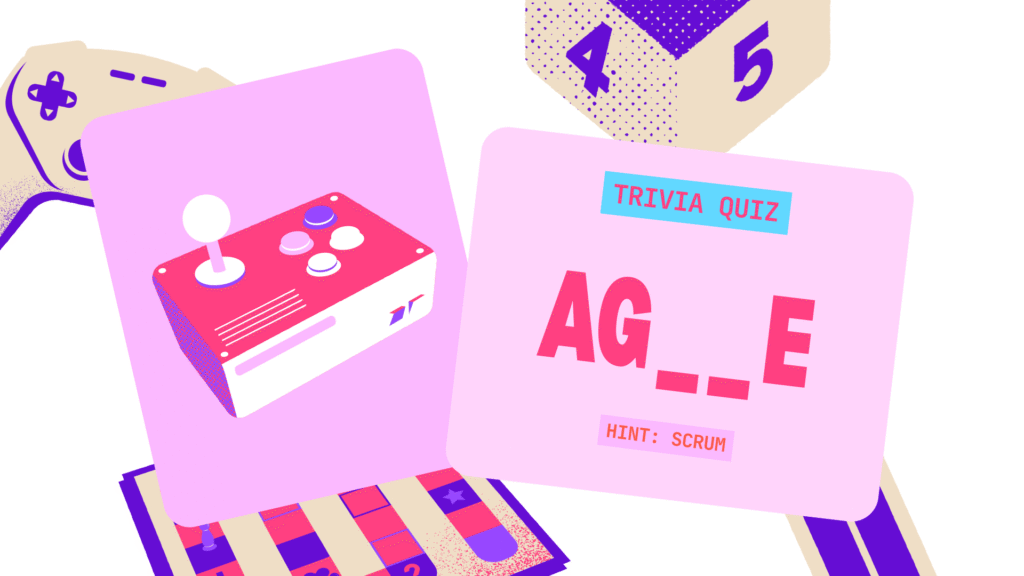
References:
Patel, A., & Plowman, S. (2025, March 27). The increasing importance of a best friend at work. Gallup. https://www.gallup.com/workplace/397058/increasing-importance-best-friend-work.aspx
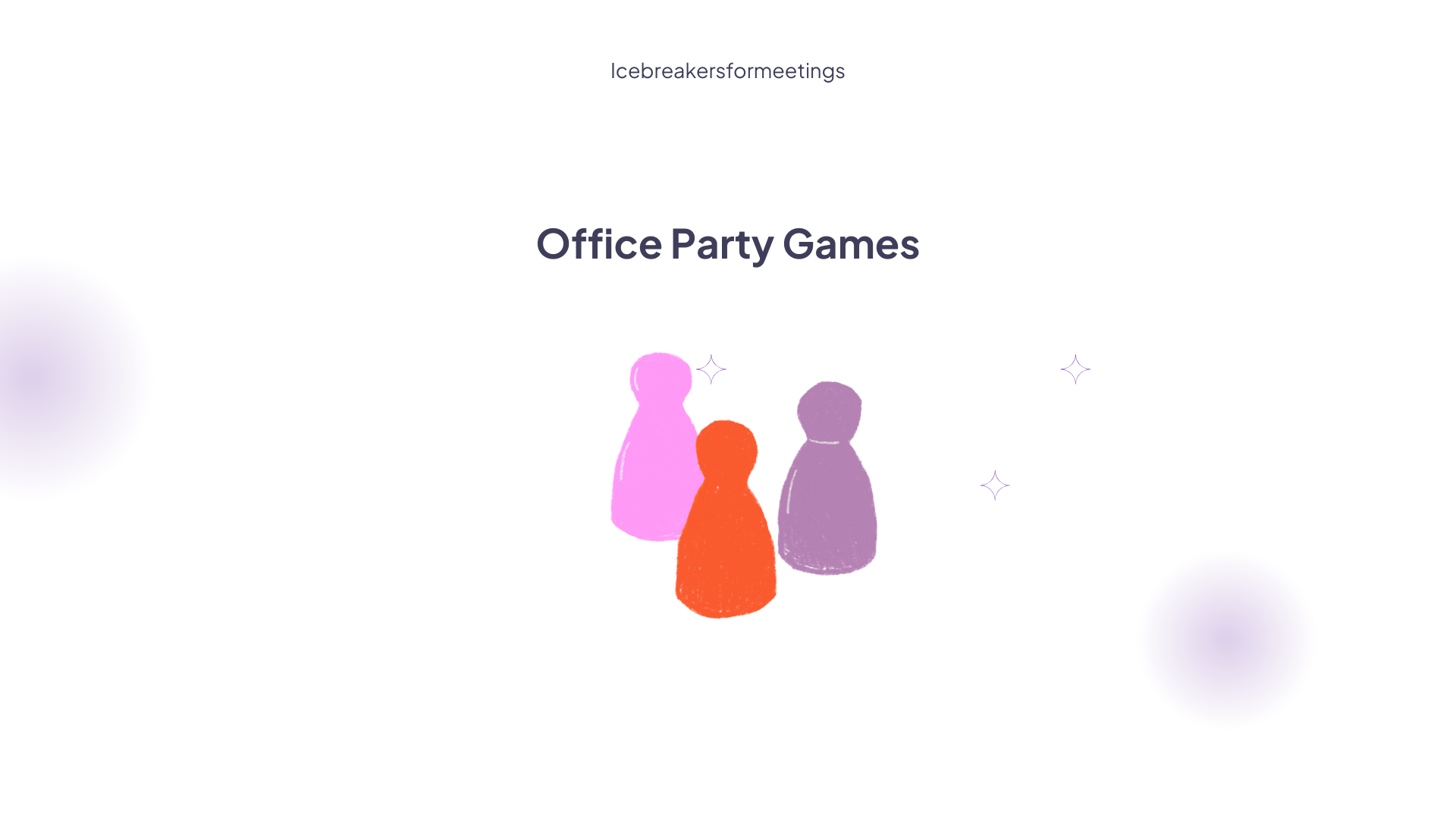
Leave a Reply